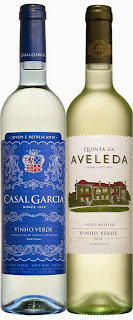Pecorino Toscano & Pecorino Sardo
Yesterday I wrote about Pecorino Romano, today Pecorino Toscano and Pecorino Sardo, two other kinds of Protected Designation of Origin (PDO) Pecorino you are likely to find in the US.
Pecorino Toscano
I ate the fresh version of Pecorino Toscano practically daily when I lived in Tuscany. In Florence, fresh Pecorino Toscano was like the Italian version of Monterey Jack, the cheese I grew up eating in California.It's mild, slightly herbal, sweet, approachable, easy to love. It's really great in a sandwich--either cold or grilled.
Pecorino Toscano is made from milk produced in Tuscany, Lazio and Umbria. As with all cheeses, it gets harder and drier as it ages. In the US it used to be much easier to the find the aged versions than the really fresh soft ones. The fresher version is particularly mild and creamy. The aged version is buttery, sometimes nutty with a peppery finish It’s just a great table cheese, perfect for an antipasto platter. Even aged it tends to be much milder than the Pecorinos from Lazio and Sardinia.
Pecorino Toscano is made from milk produced in Tuscany, Lazio and Umbria. As with all cheeses, it gets harder and drier as it ages. In the US it used to be much easier to the find the aged versions than the really fresh soft ones. The fresher version is particularly mild and creamy. The aged version is buttery, sometimes nutty with a peppery finish It’s just a great table cheese, perfect for an antipasto platter. Even aged it tends to be much milder than the Pecorinos from Lazio and Sardinia.
Pecorino Sardo
This is the Pecorino I know the least about, so I turned to cheesemonger and author Gordon Edgar to help me get a better understanding of it. Here's what he had to say:
“The tricky thing about Pecorino Sardo is the variation contained within the name. Whereas Pecorino Romano means hard, aged, grating cheese and "Fresco" means semi-soft and young, Pecorino Sardo just means sheep cheese from Sardinia which is where a lot of Italian sheep cheese comes from, labeled as Sardo or not.
There is a name-controlled version "Fiore Sardo DOP" which is raw milk and slightly smoked and one of the most amazingly complex sheep cheeses available anywhere. Rich, milky, nutty, mutli-layered, briney, and, yes, a touch smokey in a complimentary way, not the way smoke is often used to cover defects in cheese. Personally I mostly use this as a table cheese to eat with cold cuts or other cheeses. If you dislike "pecorino," this cheese may well change your mind. Make sure it says DOP though, because some importers and retailers can be a little loose with the American naming of their Italian cheese
Most Sardo sold in the US fits the middle-ground, age-wise between fresco (from whatever region) and the hard, crumbly Romano. If not name-controlled, the Sardo Maturo is my favorite one to buy. It can work as a less intense and salty alternative to grating than a Romano, but also works as a table cheese, often lending a grassy, potato-y flavor absent from many pecorinos. The aging (maturo) lets flavor develop and my favorite brand is Central Formaggi (though this is often not labeled at point of sale). You can kind of tell how strong Sardo will be based on the texture, so -- if you can -- try and squeeze it a little before purchase.”
Curious about Pecorino Romano? Read about in yesterday's post.




Comments
Post a Comment